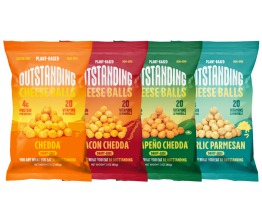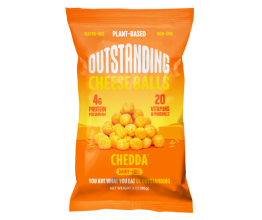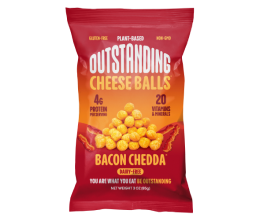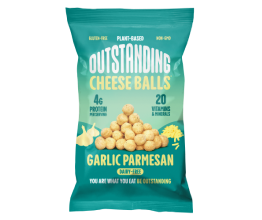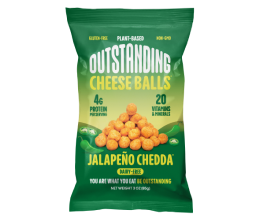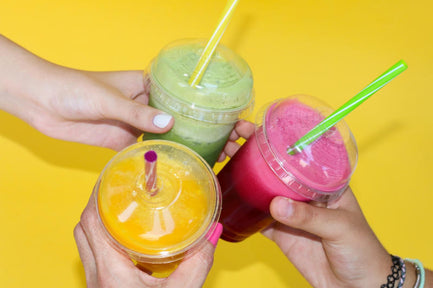How to Make Food Choices on a Soy-Free Diet
Soybeans have been part of the human diet for centuries, starting as a simple vegetable native to Southeast Asia and spreading throughout the industrialized world as a major cash crop.
Nowadays, you can’t stroll down the center aisles of the grocery store without seeing soy-based foods around every turn. From chips and crackers to meat alternatives like tofu and tempeh, soy is everywhere, but not everyone sees it the same way.
Traditionally, soy has a steadfast reputation as a healthy food, and many scientists still back that claim to this day. However, research has emerged in recent years suggesting that we might not be getting the full story about soy. Some studies have shown that soy comes with negative health effects like hormone manipulation, thyroid disruption, and even cause diseases like cancer.
There is also a portion of the population that is prohibited from eating soy – doctors’ orders. Like gluten and dairy, soy is difficult to digest for some people and can cause further problems.
Whether you’re allergic to the compounds or just want to avoid soy as a personal preference, it’s important that you can identify the ingredient as you navigate the world of food today.
Here is your go-to guide to making food choices on a soy-free diet, with some suggestions for healthy foods to eat and methods to make sure you get all the nutrition you need.
Assess Your Soy Situation
Before you decide to eliminate soy from your diet, it’s worth checking in with a doctor to assess your general health and how your body responds to the food. Diagnosing yourself based on internet articles and social media is never good, and you don’t want to live in fear of something that truly causes you no harm.
You may discover that soy doesn’t actually interfere with your health and fitness goals, and your doctor may reassure you that there’s nothing to fear. Alternatively, you may be told to avoid soy 100% and be urged to take the situation far more seriously.
The point is that you should always get a professional opinion before making a change to your diet, rather than going off studies or rumors you hear from friends or on the internet. This will save you a lot of headaches in the future and protect you from making any rash decisions.
Soy-Based Foods to Avoid
If you decide that soy is no longer on the menu, your first responsibility is to get rid of foods that use soy as the primary ingredient. While some foods clearly contain soy in the name, others are not so obvious.
Here’s a list of some foods that have a healthy reputation but should be avoided:
-
Edamame: fresh soybeans that are served steam in their natural green pod casing or processed as a salty snack.
-
Kinako: a Japanese soybean flour used as an unsweetened garnish or baking alternative in cookies, cakes, and bread. It can also be found in frozen desserts, shakes, and smoothies.
-
Miso: a paste used in soups and sauces to flavor foods common in Japanese cuisine.
-
Soy sauce and Shoyu: the salty, soy-based liquids used in Asian cuisine and are increasingly common in many western recipes. Tamari, Soya, and Teriyaki are also popular soy-based sauces in this vein.
- Tofu and Tempeh are solid blocks of bean curd produced with soy milk and available in varying degrees of softness. Popular with vegetarians as a meat alternative.
While these foods are almost 100% soy-based, many scientists suggest that these are healthier than the processed soy products seen in many grocery-store items of the modern age.
If you are concerned about reducing soy, start here, but remember that the negative health effects discussed by researchers are more present in the highly processed foods that we will discuss next.
Labels and Ingredient Lists
Since soybeans are durable, profitable crops, they’ve been popularized in the west in the past several decades, appearing prominently in many of the foods we eat every day.
The problem is that many food labels do not directly indicate to the consumer that they contain soy. You need to keep a close watch for unsuspecting ingredients that come from soy but do not necessarily make it clear to the public eye.
Monosodium glutamate (MSG) is one example of a less-than-healthy ingredient we commonly see as a flavor enhancer for baked goods and fried foods. This controversial compound often contains soy extracts, among other chemicals that you will be wise to avoid regardless of your position on soy.
Hydrolyzed soy protein (HSP) is a popular protein alternative found in many powders and sauces used to provide a beefy flavor boost to vegetarian and vegan dishes, but as the name suggests, it’s off the table for soy-free dieters.
Be aware of products containing textured vegetable protein (TVP) as well – they often have a similar chemical profile to HSP and likely contain soy. Hydrolyzed plant protein (HPP) and hydrolyzed vegetable protein (HVP) are less-common names for the same thing, so add them to your list of no-goes.
Finally, be on the lookout for any foods containing Mono- and diglycerides, emulsifiers meant to add stability to products like nut butter, dressings, candy, frosting, and baked goods. These are sneaky ingredients that make their way into many mainstream snack foods and desserts, so learn to identify them quickly and avoid them when possible.
Once you start seeing with your own eyes how many standard store items contain soy products, you will likely move away from processed foods in general, steering toward whole food ingredients that don’t use suspicious seed or bean oils. Going soy-free will help you make smarter health choices in general, so view it as education if nothing else.
Cross-Contamination Concerns
Given what we know about soy so far, you’re right to suspect that some foods contain soy ingredients despite no clear indication on the label. It’s true that the majority of processing facilities rely heavily on soy and that cross-contamination is a real phenomenon.
Rather than just skimming the nutrition facts panel and ingredients list, you’ll need to look for other signals that your food items are indeed 100% free of soy. You will often find a small-print disclaimer at the bottom of the panel stating which ingredients may be cross-contaminated with the product in your hands.
This is where you need to proceed with caution and use your best judgment when considering a purchase. Perhaps you aren’t so comfortable buying food that “may contain soy” or is “produced in a facility that also processes soy.”
Depending on the severity of your allergy and your concerns with soy intake, it might be better to avoid these types of products altogether, even if they otherwise meet the guidelines of the Food Allergen Labeling & Consumer Protection Act (FALCPA).
Soy-Free Foods for Plant-Based Eaters
If you’re one of the many vegetarians who has long trusted tofu and tempeh to increase your protein intake, it might be challenging to say goodbye to soy. For vegans who don’t eat animal products of any sort, this only ramps up the difficulty factor.
Vegetarians can still get away with eating foods like eggs, yogurt, and cheese to get their fill, but vegans need to lean more heavily into plant-based proteins like legumes and nuts to hit their daily requirements. Lentils, chickpeas, red beans, and others can take you a long way and can be included in many tasty recipes for any time of day.
Start experimenting with different types of soups, stews, and chilis that put beans in the spotlight, being sure to include other ingredients like squash and potatoes that are also nutrient-dense.
Vegetarians will want to make whey protein a staple for daily shakes and smoothies, and vegans can find hemp and pea protein that does the trick as well.
The tough part is finding healthy, convenient snack foods that fit your requirements and don’t weigh you down with unwanted salt, fat, or additives.
Remember that just because a food is certified vegan and soy-free doesn’t mean it’s good for you (we’re looking at you, vegan brownies).
Faced with this dilemma ourselves, we set out to produce delicious, crunchy snacks that pack tons of protein without soy or any animal products whatsoever. Our Pig Out Pigless Pork Rinds have been an instant hit with health food crowds, delivering 25 grams of protein and some truly epic flavors you’ll fall in love with at first bite.
If you’re looking for a more complete nutritional profile and craving a classic snack feel, our Outstanding Puffs are the perfect prescription. They are loaded with 21 grams of protein, plus a third of your daily value for many key micronutrients.
Learn more about the Outstanding Foods approach to healthy soy-free snacks here.
Conclusion
Going soy-free might be more of a challenge than it seems, forcing us to decode labels and ingredients panels to find healthy, hearty foods. Follow these tips and use your intuition to steer clear of soy and set yourself up for optimal health moving forward.
Sources:
Is Soy Good or Bad for You? Here's the Science-Backed Answer | Good Housekeeping
How to Make Food Choices on a Soy-Free Diet | Very Well Health
